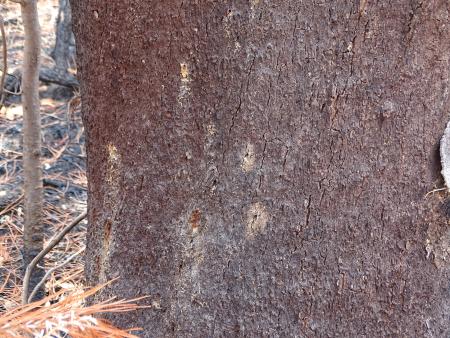
Objective:
Cork oak vitality, namely the plagues and diseases, is one of the main concerns of forest producers, with the platypus being one of the pests mentioned in Portugal as a factor responsible for the mortality of cork oak trees.
The knowledge of the pest as well as the means/techniques of combat available, its form of use and the characteristics of the cork oak forests that make them more susceptible to the platypus are some of the proposals to be addressed in this document and in the PLATISOR project (Methods for the management of cork oak forest with «Platypus cylindrus» atacks in the region of Sor), currently underway.
Context:
The studies carried out in cork oak forests with the objective of finding which pathogenic insects have the greatest impact, allow us to state that platypus is one of the species responsible for the death of the cork oak in Portugal and Morocco and in some other countries of the Mediterranean basin.
It’s an “ambrosia” bettle, a name attributed to insects that develop symbiosis with fungi that, besides being a source of food for the larvae and adults, also break down the wood tissues, facilitating the construction of the insect galleries.
The use of slit traps can help in the plague monitorization over time.
Contacts:
Conceição Santos Silva, mcssilva@unac.pt, http://www.unac.pt/
Further information:
http://www.iniav.pt/menu-lateral-geral/projetos-de-investigacao/platisor
(1) Henriques, J.; Inácio, M.L.; Sousa, E. (2009). Fungi associated to Platypus cylindrus. Fab. (Coleptera: Platypodidae) in cork oak. Revista de Ciências Agrárias 32(2): 56-66.
(2) Inácio, M.L.; Henriques, J.; Sousa, E. (2005). Atas das Comunicações do 5º Congresso Florestal Nacional, Viseu.
(3) Inácio, M.L.; Henriques, J.; Sousa, E. (2015). As relações mutualistas entre fungos e insetos: sua influência no estado sanitário da floresta em Portugal: Research Gate.
(4) ICNF, 2018 - Plano de Controlo para o Insecto Platypus cilindrus.
(5) Sousa, E. M. R.; Debouzie, D. (1999): Spatio-temporal distribution of Platypus cylindrus F.(Coleoptera: Platypodidae) attacks in cork oak stands in Portugal. IOBC / wprs Bull., 22(3), 47-58.
(6) Sousa, E.; Inácio M.L. (2005). New aspects of Platypus cylindrus FAB. (Coleoptera: Platypodidae) Life History on Cork Oak Stands in Portugal: Research Gate.











